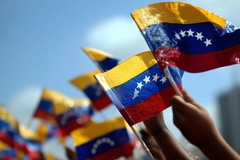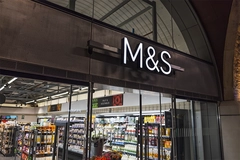
- Industry news
Industry news
- Category news
Category news
- Reports
- Key trends
- Multimedia
- Journal
- Events
- Suppliers
- Home
- Industry news
Industry news
- Category news
Category news
- Reports
- Key trends
- Multimedia
- Events
- Suppliers
KEY INTERVIEW: Rebranded Tereos Eyes Opportunities as the End of EU Sugar Quotas Nears
10 Dec 2015 --- 2017 will see the end of the EU sugar quota system, which has been regulating the beet sugar market for 50 years. This represents a historic milestone: the EU sugar market will be open, and sugar and isoglucose production will no longer be limited.
It will mean that the European sugar balance will effectively be reversed in 2017. Europe, which currently imports over three million tons of sugar annually, will have a surplus and therefore start to regain positions in the international market. France will once again lead the field: it is expected to account for two thirds of European surpluses, so the stakes involved with exports will be very significant.

As the world’s 3rd largest sugar producer, Tereos specializes in the processing of sugarbeets, sugarcane, and cereal grains. The Group has leading positions in the alcohol market (No. 1 in Europe) and the starch market (No. 3 in Europe). Tereos operates 43 industrial units and has 24,000 employees on four continents. In 2014(4)-2015(4), the Group posted sales of €4.3 billion.
The end of the quota in 2017 represents an opportunity to develop Tereos’ positions in Europe and further strengthen its business internationally. “The end of the sugar quota system will have a major impact,” Alex Luneau, Executive Vice-President at Tereos told FoodIngredientsFirst, at FiE 2015 in Paris. “You have seen what the impact of the new dairy regime in the EU has had. You have seen the impact of the freeing up of the meat market. Each sugar company is going to be able to produce more.”
The loosening of the reigns also means that sudden capabilities will be in place to export more. “Up until now, sugar was restrained in the export market. What you can expect is quite a divided European market, where you have countries with sugar surpluses and others with sugar deficits. The surplus will most be in North West Europe, with France having the largest sugar surplus, followed by Germany, Poland, Denmark and the Benelux. And there will deficit regions like the UK, Spain and Ireland, which will have to import more,” he noted.
Tereos itself has announced plans to boost its’ own operations by 20%. But, considering the impact that the end of dairy quota system has had on milk prices, does it make sense to boost production if prices will most likely fall as a result of oversupply? Luneau is confident, with the company making a number of announcements in anticipation of the change. “It only makes sense to boost production if you can be price competitive and are pretty sure of your commercialization capabilities,” he notes.
The company is digging its heels in anticipation of the changes. “We already had our own distribution network in Europe, but we recently acquired a company in the UK [Napier Brown, Europe’s leading independent sugar distributor]. Again we had to set up our teams and distribution channel to commercialize the production that we have. We have also set up an export and trading business [Tereos Commodities], which is effectively taking some of our sugars from Europe, but also Brazil and Africa, and some of our alcohol and ethanol into the export markets, as there is growth there too.”
 With the creation of Tereos Commodities export trading business (November 2014), the Group has set out its ambition to become one of the global market leaders for international white sugar trading, targeting a market share of 15% of the global white sugar trade by 2020. It enables Tereos to supply its international customers on an ongoing basis with no intermediaries, with its white and raw sugar from its factories in Europe, Brazil, Africa and Asia. Tereos Commodities has been recently extended, to also deliver alcohol to its valued customers worldwide. Tereos has also opened an office in Singapore to support the regional demand for starch & sweeteners products.
With the creation of Tereos Commodities export trading business (November 2014), the Group has set out its ambition to become one of the global market leaders for international white sugar trading, targeting a market share of 15% of the global white sugar trade by 2020. It enables Tereos to supply its international customers on an ongoing basis with no intermediaries, with its white and raw sugar from its factories in Europe, Brazil, Africa and Asia. Tereos Commodities has been recently extended, to also deliver alcohol to its valued customers worldwide. Tereos has also opened an office in Singapore to support the regional demand for starch & sweeteners products.
The onset of increased sugar export opportunities comes as Tereos itself undergoes a rebranding. In October 2015, a major milestone was reached by bringing all its activities under the single brand “Tereos.” As a result, Tereos’ business units are renamed. In Europe:
• Tereos Syral EU becomes Tereos Starch & Sweeteners Europe
• Tereos France, Tereos Sucres and Tereos Alcools become Tereos Sugar France
• Tereos Romania becomes Tereos Sugar Romania
• Tereos TTD becomes Tereos TTD Sugar Czech Republic
“Tereos grew from a farmer cooperative in the 1950s, to expand exponentially since. 60 years later, we are the third largest sugar producer globally, but have also expanded and integrated some significant acquisitions in starches & sweeteners. We made large investments in expanding in Asia-Pacific and Africa, and have developed some new protein products and nutritional solutions. But the company was not really operating under one name, brand and set of capabilities,” Luneau says, in explaining the rationale.
“We felt that it was important to provide clarity to our customers, to effectively now speak about ‘one Tereos,’ which is really about being able to bring to our customers, we have decided to serve products across the board, whether it is sweetness, texturizing or protein solutions. I think it is clearer, better for our customers and frankly better for our employees; as we bring this together,” he adds.
Luneau confirmed that at this stage there were no plans for job losses as a result of the synergies. Beyond the obvious branding synergies, he noted how the company is working on their formulation centers, various scientist capabilities and group resources as a result of the integration. These types of services are now more readily available for the various business units globally. “If, for example, you are a customer in soups & sauces or confectionery, you can get access to our R&D people and be able to get the service of formulations, but can also speak to our nutritionists, regardless of the types of ingredients that you will be using. We can be a unique competent company at the farm, the whole way through to the formulations.”
R&D forms an important role to help leverage and optimize the company’s diverse product portfolio. Tereos’ R&D centers gather more than 200 experts and cumulate 5,000sqm. of laboratories, located on five geographical sites, including an application center enabling the testing of ingredients in Marckolsheim, France, and a pilot laboratory for ingredients and process development in Aalst, Belgium.
Luneau notes that the Belgian center is currently being expanded to work on new sugars and some breakthrough technologies, to help prepare for the 2017 sugar policy impact. But further R&D expansion is also taking place. “We have signed some agreements with research institutes this year. We are starting to build our R&D capabilities in Brazil and frankly where we have done a lot, is in renewing and bringing on board some new people that bring us competencies in nutrition and formulations,” he says.
The R&D team is working hard on developing on trend solutions with both their sweetening and protein portfolio. “We see a trend towards mid calorie and low calorie, as well as a trend towards high protein products in some very specific markets; whether infant nutrition or for the elderly population,” says Luneau. Some recent concepts to come out of this R&D work that utilize health ingredients from across the Tereos portfolio were sampled at FiE 2015:
 • A reduced sugar (-50%) and energy (-50%) soft drink: Formulated with 20.6% of mango juice and sweetened with a specific combination of fructose syrup, sucrose and a selected stevia extract.
• A reduced sugar (-50%) and energy (-50%) soft drink: Formulated with 20.6% of mango juice and sweetened with a specific combination of fructose syrup, sucrose and a selected stevia extract.
• High fiber smoothie: The addition of Actilight fructo-oligosaccharides allows the maintenance of a high level of fibers whatever the quality of the fruits used in the production batch.
• Sugar-free marshmallows: Produced with Maltilite maltitol liquid, and maltitol powder for the coating. They can be processed on a standard production line by adapting the aerator parameters.
• Indulgent coconut macaroon (-30% sugars): Tereos has designed a sugars reduced recipe using Actilight fructo-oligosaccharides.
• High protein crackers (20% of energy coming from proteins): These savory crackers are formulated with a specific combination of Meripro (hydrolyzed wheat protein) and Amygluten (vital wheat gluten).
Other recent expansion plans for Tereos as a whole have been largely geographical, although Luneau stresses that the company is not forgetting about Europe. “If I look back at the last 12 months, we have just made the acquisition of a sugar mill, with a local partner in Kenya. This is actually nice as it fits with our African strategy along with Tanzania and Mozambique,” he explains.
“We now have completed, fully integrated and expanded our starch & sweetener plant in Indonesia [the world’s third-largest starch importer], where we are the sole corn manufacturer. We have opened a brand new very large wheat plant for starch and sweeteners in China; our second plant there. There are more, but in summary you can see us growing more and more in these regions,” he concludes.
The end of the sugar regime can mean new business opportunities for EU sugar players looking to expand their reach. But innovation in specialty health ingredients will also be key in helping to formulate the new products of 2016, 2017 and beyond.
By Robin Wyers









